This set of Construction Materials Questions and Answers for Campus interviews focuses on “Joints in Concrete Structures”.
1. Identify the given joint in Concrete Structures.
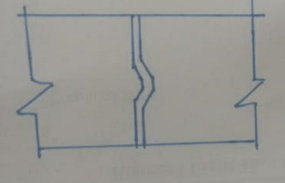
a) Horizontal construction joint
b) Vertical construction joint
c) Expansion construction joint
d) Water tank joint
View Answer
Explanation: The construction joints are provided at locations were the construction is stopped either at the end of the day or for any other reason. The provisions of the construction joint become necessary to ensure proper bond between the old work and the new work.
2. Identify the given joint in Concrete Structures.
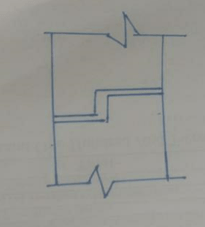
a) Horizontal construction joint
b) Expansion construction joint
c) Vertical construction joint
d) Water tank joint
View Answer
Explanation: The construction joint maybe horizontal or vertical. For an inclined or curved member of the joint should be at right angle to the axis of the member. It is necessary to determine the location of construction joints well in advance for the viewpoint of structural stability.
3. Identify the given type of joint in Concrete Structures.
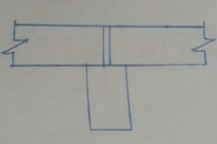
a) L beam construction joint
b) T beam construction joint
c) Expansion joint
d) Contraction Joint
View Answer
Explanation: In case of T-beams, the ribs should be filled with concrete first and in the slabs forming the flanges can be filled up to the centre of the ribs. If a construction joint between slab and beam becomes unavoidable especially as in the case of long and deep beams, that T beams are used.
4. Identify the given joint in Concrete Structures.
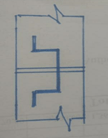
a) Expansion joint
b) Contraction Joint
c) Water tank joint
d) Vertical construction joint
View Answer
Explanation: For water tanks and other structured which store water, the strips of copper, aluminium, galvanized iron or other corrosion resistant material known as water stops or waterbars, are placed in construction joint as shown in given figure above.
5. Identify the given joint in Concrete Structures.
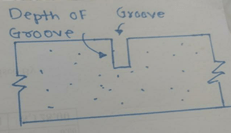
a) Partial contraction joint
b) Complete Contraction Joint
c) Horizontal construction joint
d) Dummy joint
View Answer
Explanation: Above figure shows another form of contraction joint. It is also known as a dummy joint and in this case, a groove of 3 mm width is created in the concrete member to act as a joint. The groove is filled with the joint filler and its depth is about 1/3 to 1/5 of the total thickness of the member.
6. For water tanks and other structure which store water, the strips of copper, aluminium, galvanized iron or other collision resistance material, known as the ________
a) Joints
b) Waterstops
c) Dowels
d) Fillers
View Answer
Explanation: The function of waterstops is to seal the joint against the passage of water. The waterstop may also be the natural and synthetic rubber or polyvinyl chloride(PVC).
7. The expansion and contraction joints generally consist of some elastic material, known as ________ which should be compressible, rigid, cellular and Resilient.
a) Keys
b) Joint filler
c) Keys
d) Fillers
View Answer
Explanation: The usual joint filler are built-in strips of metal, bitumen treated felt, cane fibre board, cork bound with rubber or resin, dehydrated cork, natural cork, softwood free from knots, etc.
8. The _________ are provided in expansion and contraction joints to transfer the load.
a) Dowels
b) Fillers
c) Joint filler
d) Waterbars
View Answer
Explanation: The contraction joints are installed to allow for shrinkage movement in the structure. It may either be a complete contraction joint or a partial construction joint. In the former case, there is complete discontinuity of both concrete and steel.
9. The ___________ is the most effective process of repairing concrete work which has been damaged due to inferior work or other reasons.
a) Grouting
b) Scraping
c) Dewatering
d) Guniting
View Answer
Explanation: In Guniting, the surface to be treated is cleaned and washed. The nozzle is generally kept at a distance of about 750 mm to 850 mm from the surface to be treated and velocity of nozzle values from 120 m/sec to 160 m/sec.
10. The _______ is a mixture of cement and sand, the usual proportion being 1:3.
a) Mortar
b) Slurry
c) Gunite
d) Concrete
View Answer
Explanation: A cement gun is used to deposit the Gunite mixture on the concrete surface under pressure of about 20 N/cm2 to 30 N/cm2. The cement is mixed with slightly moist sand and the necessary water is added as the mixture comes out from the cement gun.
Sanfoundry Global Education & Learning Series – Construction and Building Materials.
To practice all areas of Construction Materials for Campus Interviews, here is complete set of 1000+ Multiple Choice Questions and Answers.
If you find a mistake in question / option / answer, kindly take a screenshot and email to [email protected]
- Check Civil Engineering Books
- Practice Civil Engineering MCQs
- Check Construction and Building Materials Books
- Apply for Civil Engineering Internship
